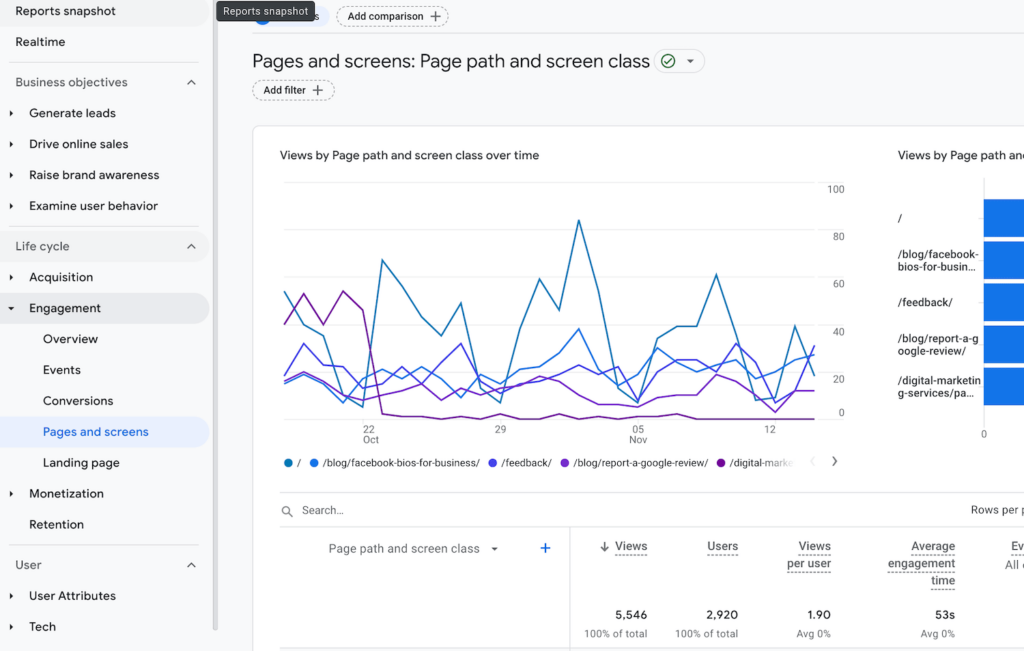Browsing the Depths of Second Dimension in Google Analytics: An In-depth Exploration on Its Capability
Additional measurements, though relatively simple at initial glimpse, nurture a riches of untapped potential waiting to be taken advantage of. As we get started on this journey to explore the nuanced functionality of secondary dimensions, we will reveal how this feature can illuminate patterns, introduce correlations, and inevitably lead the way for informed decision-making in the digital landscape (what is a “secondary dimension” in google analytics?).
Comprehending Secondary Dimensions in Google Analytics

Recognizing exactly how additional dimensions work is essential for leveraging the complete power of Google Analytics. By combining primary metrics with secondary measurements, you can gain important understandings that drive notified decision-making and optimization methods.
Leveraging Additional Dimensions for Information Evaluation
Structure upon the foundational understanding of just how additional dimensions improve information analysis in Google Analytics, the utilization of these additional layers of info becomes vital in drawing out beneficial understandings for educated decision-making and optimization approaches. By leveraging additional measurements, experts can delve deeper right into the performance metrics by adding more context to the main measurements, hence revealing covert patterns and correlations that could not be obvious initially glimpse. This much deeper level of evaluation makes it possible for organizations to much better recognize user actions, determine patterns, and identify locations for improvement.
In addition, additional dimensions supply an even more extensive view of the data, enabling division based on numerous criteria such as demographics, tools, website traffic resources, and a lot more. This division helps with a more granular evaluation, allowing companies to tailor their strategies and projects to details audience sections for boosted targeting and customization. Basically, the tactical usage of second measurements empowers companies to make data-driven choices that drive growth and success in the digital landscape.
Advanced Methods for Secondary Measurement Application
Checking out complex methods to harness the complete potential of secondary dimensions in Google Analytics boosts the deepness and class of information evaluation for strategic decision-making. One innovative strategy for carrying out additional dimensions is using personalized measurements. By defining personalized dimensions, customers can section data additionally to acquire more certain understandings right into customer habits, such as tracking interactions with certain components on a web page or monitoring the performance of a particular advertising campaign. An additional innovative method is the usage of regex (regular expressions) within additional measurements. Regex enables even more powerful and versatile pattern matching, allowing customers to develop intricate filters for information analysis. In addition, integrating secondary dimensions with advanced sections can offer also extra granular insights by using multiple layers of segmentation to the data. This method permits a deeper understanding of customer actions based upon various requirements simultaneously. Carrying out these sophisticated methods for second measurements in click to read more Google Analytics equips customers to conduct more sophisticated analysis and make data-driven choices with accuracy.
Interpreting Insights Through Secondary Measurements

When translating insights through secondary dimensions, it is vital to consider the context of the data and just how different dimensions connect with each other. As an example, understanding which specific web traffic resources cause higher conversion prices or determining which tools individuals like for making acquisitions can provide actionable understandings for enhancing advertising and marketing projects and improving total internet site performance. By carefully analyzing the information with secondary dimensions in mind, businesses can make informed choices that drive purposeful results and boost their digital visibility.
Maximizing Efficiency With Additional Dimensions

One vital way to maximize efficiency with second dimensions is by segmenting information more granularly. This allows you to isolate particular factors that might be affecting your metrics and get a much better understanding of what drives success or failure in your digital campaigns. By incorporating secondary measurements such as 'device category' and 'landing page,' you can pinpoint which device kinds are most reliable for certain landing pages, enabling you to tailor your approaches appropriately.
Furthermore, utilizing additional dimensions can help you determine patterns, patterns, and correlations that may not appear when assessing information with main dimensions alone. This much deeper level of evaluation can lead to more informed decision-making and inevitably improve the general efficiency of your site or digital advertising campaigns.
Conclusion
In verdict, second measurements in Google Analytics play an important role in enhancing data analysis and supplying deeper understandings into website efficiency. By utilizing sophisticated techniques and analyzing the information properly, services can maximize their methods and boost total performance. Recognizing the performance of additional measurements is essential for making notified decisions and driving success in the digital landscape.
By leveraging second measurements, experts can delve deeper right into the performance metrics by including even more context to the main measurements, hence revealing surprise patterns and connections that might not be obvious at initial glimpse. One advanced strategy for carrying Check Out Your URL out additional measurements is the usage of custom dimensions.Having mastered innovative methods like custom-made measurements and regex for second measurement application in Google Analytics, the following crucial action is interpreting the beneficial insights acquired through these innovative information division techniques. Interpreting understandings with additional measurements entails evaluating the partnerships between the second and primary measurements picked, revealing patterns, fads, and relationships that may not be immediately obvious when looking at the information in its whole.When interpreting insights through second dimensions, it is crucial to consider the context of the data and exactly how various measurements engage with each other.